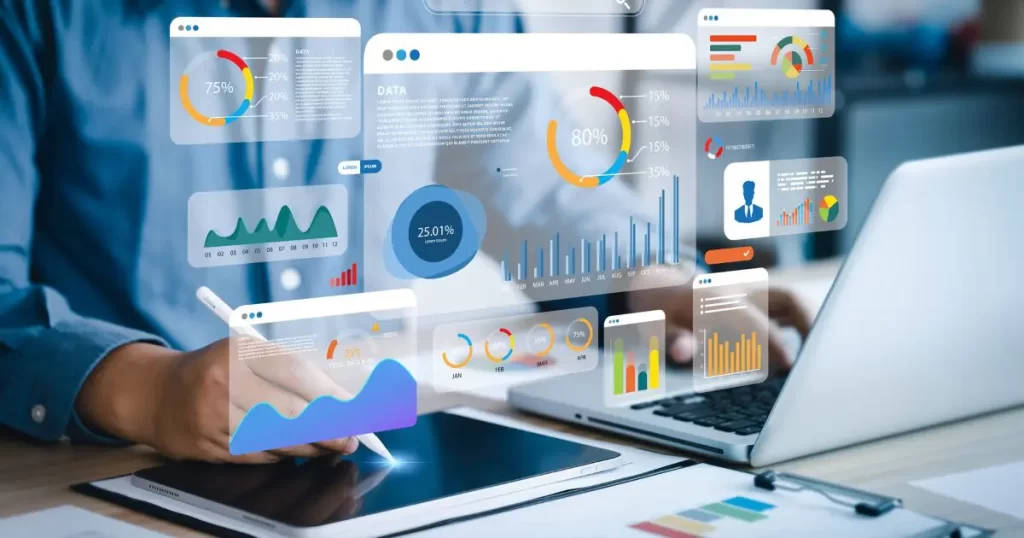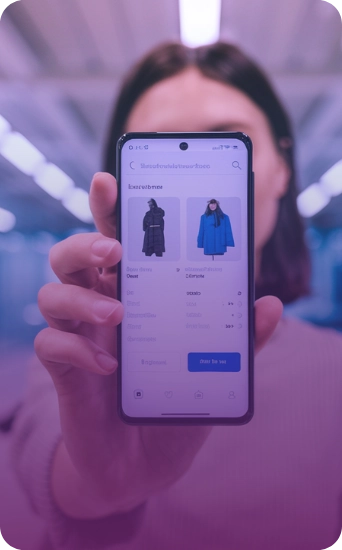The power of branding in e-commerce: how identity and values drive sales

When you think of branding in the context of e-commerce, it's common to imagine that it's all about the product, the offer or the look of the online store, which is the main point of contact with consumers. However, this simplistic view ignores the true impact of the brand, which goes beyond immediate conversion and sales. But why does someone choose a product over a competitor? Promotions, cashback, free shipping? Yes, these strategies are important and used successfully, but they are easy to replicate. With a plethora of similar products and services on the market, the difference often lies in brand identity. Nowadays, almost everything can be copied: product features, design and even marketing strategies. What cannot be replicated is the essence of a brand. Building a clear identity, with defined values, creates identification, generates preference and builds lasting bonds with consumers. Institutional branding: the pillars that connect the brand to the consumer In e-commerce, branding goes beyond an attractive logo or design. It involves values, culture and personality, which are essential for generating identification with the public and boosting sales. There are five key factors that consumers take into consideration when choosing a brand: Values and purpose: identification with the company's mission and principles, such as sustainability or social impact, is a great motivator. Reputation and credibility: the trust a brand builds over time, based on ethics and transparency, creates a competitive advantage. Social and environmental responsibility: engagement with sustainable practices or social causes increases perceived value. Innovation and leadership: being a reference in innovation strengthens the perception of leadership in the sector. Culture and relationships: relationships with customers and partners create an emotional connection that goes beyond the simple purchase. Branding and revenue: the connection between identity and sales growth Investing in branding is not just about image, but also a direct strategy for increasing revenue and sales. A Nielsen study revealed that 59% of consumers prefer to buy new products from well-known brands, and 21% choose brands that convey trust. This shows how brand perception significantly influences purchasing decisions. In addition, a Harvard Business Review study highlights that companies with strong branding are able to charge up to 13% more than their competitors, while maintaining high levels of loyalty. A strong brand creates a differential that goes beyond price or quality. The role of institutional marketing in sales strategy Institutional marketing goes beyond creating brand awareness - it strengthens the perception of value, directly impacting sales. Companies that invest in institutional branding tend to have more loyal customers who are willing to pay more for their products or services. In addition, branding allows for clear differentiation in saturated markets such as e-commerce. We are a clear example of how institutional marketing can boost reputation and growth. The company has been expanding its operations and already has seven distribution centers in Brazil and abroad, as well as a team of 500 employees. This growth is directly linked to its commitment to innovation, sustainability and excellence in its relationship with customers and partners. Impact of branding on customer retention and loyalty In addition to attracting new customers, branding is essential for retention and loyalty. A Bain & Company study shows that a 5% increase in customer retention can generate up to 95% more profit. This means that well-executed branding ensures that consumers buy again, creating a sustainable sales cycle. Our commitment to solid values and proximity to customers ensures that the brand is remembered, even with many options on the market. Around 70% of clients return for new projects, and the satisfaction rate is around 90%, proving the direct impact of branding on retention. Conclusion: branding as an engine for growth Institutional branding is one of the main factors in driving revenue and sales over the long term. Research indicates that the ideal budget allocation is 60% for branding and 40% for activation actions. Branding involves sponsorships and promoting events linked to the brand, while activation focuses on short-term actions such as email marketing and promotions. Therefore, branding is what creates an emotional connection with consumers, sustains the brand's reputation and allows it to stand out in saturated markets. The essence of the brand - its identity, values and purpose - can be the differentiator that drives sales and guarantees continued success.
Omnichannel on Black Friday: is it a good strategy?

Black Friday is one of the biggest commercial events in the global calendar, eagerly awaited by consumers and companies alike. During this period, retailers seek to increase their sales and win new customers, while consumers eagerly await attractive promotions. However, as shopping behavior evolves, consumer expectations become more complex and demanding. To meet these new demands, companies need to adapt, and one of the best ways to do this is by adopting an omnichannel strategy. Loyalty is a benefit Customer loyalty is one of the main benefits of an omnichannel strategy, especially during events such as Black Friday. The modern consumer values convenience and consistency, and when a company offers multiple points of contact, it increases customer confidence and satisfaction with the brand. By investing in omnichannel, companies can offer a personalized experience. For example, a customer can start their shopping journey by browsing the company's website, continue by checking out promotions on the app and finalize the purchase in the physical store. Integration between these channels allows the company to better understand the customer's buying behavior, offering personalized suggestions and targeted promotions, which increases the chances of conversion. In addition, an effective omnichannel experience can increase the level of customer satisfaction, leading to greater loyalty. During Black Friday, in the midst of so many offers available, a customer who already trusts and has a positive history with a brand is more likely to make purchases with it, even if the price isn't the lowest on the market. Increase in purchases and average ticket According to the research "A Study of 46,000 Shoppers Shows That Omnichannel Retailing Works", by Harvard Business Review, omnichannel consumers spend, on average, 4% more in each shopping session in physical stores and 10% more online, compared to consumers who only use a single channel. During Black Friday, this trend is even more evident, as consumers are more willing to take advantage of intense offers and promotions. Integration between channels also allows companies to offer a more convenient shopping experience. A common example is the "buy online and pick up in store" service, which has become increasingly popular. As well as reducing freight costs, this option encourages customers to visit the physical store, where they can make additional purchases, taking advantage of cross-selling. With this strategy, companies have the opportunity to increase the average ticket per customer. A consumer who interacts with the brand through various channels tends to buy more products and often opts for items with greater added value, which contributes to increasing the company's revenues. What are the advantages for companies? For companies, the omnichannel strategy represents a crucial competitive advantage, especially in an environment as competitive as Black Friday. Adopting this approach offers several benefits: What about for consumers? Convenience: consumers can choose the channel that suits them best, either buying online and picking up in store, or buying directly from e-commerce with home delivery. This makes the buying process easier and caters for different preferences, providing greater flexibility. Consistency and personalization: customers experience continuity in the purchasing journey, regardless of the channel used, incorporating the concept of the "One Stop Shop" (a business model that brings together a wide variety of products or services in a single location). In addition, personalization, based on customer behaviour on different channels, enhances the shopping experience and can significantly increase satisfaction. Why use this strategy on Black Friday? Black Friday is a period of accelerated shopping, when consumers are willing to spend, but also demand convenience and agility. The omnichannel strategy allows companies to offer a more fluid shopping experience, meeting the expectations of a demanding and connected public. With the multiplicity of channels available, consumers are looking for ease and speed when completing their purchases, and companies that manage to offer this tend to stand out from their competitors. Channel integration also allows companies to respond more quickly to peaks in demand, adjusting stocks and promotions in real time. In a high-volume event like Black Friday, this agility can be decisive for success. Can all companies adopt it? Although the omnichannel strategy brings a number of benefits, not all companies are ready to implement it fully. For small companies, full integration between channels can require significant investment in technology, logistics and staff training. However, this doesn't mean that small and medium-sized companies can't benefit from this strategy. There are more accessible solutions, such as integrating e-commerce platforms with marketplaces, using multichannel inventory management systems and offering simple "click and collect" options. The important thing is that the company assesses its investment capacity and chooses scalable solutions that can grow along with the business. Adopting an omnichannel strategy on Black Friday can be a game-changer for many companies, allowing them not only to increase sales, but also to retain customers in the long term. Investing in omnichannel is therefore not just a trend, but a necessity for companies wishing to stand out and grow during high-impact events such as Black Friday.
How can BI forecasts change the e-commerce game?

BI has established itself as an essential tool for the success of e-commerce, as it provides valuable insights based on data. Revolutionizing e-commerce with forecasts that can change the game in countless critical areas, the technology improves decision-making, operational efficiency and, above all, the customer experience. Referred to as "business intelligence", the concept of BI brings together theories, methodologies and processes that, combined with technology, make it possible to collect and convert a significant amount of data into structured information, with the aim of benefiting the company and its decisions, putting it ahead of the competition. Offering a broad view of the business and the market scenario, data identifies trends and detects flaws in order to apply preventive rather than corrective measures. Therefore, interpreting and analyzing the information mapped out through BI support allows action to be taken in a timely manner. Today, stock-outs, for example, are one of the biggest challenges for e-commerce, resulting in lost sales and, consequently, customer dissatisfaction. In this case, BI anticipates possible stock-outs by analyzing history, seasonal trends and inventory data. Even the most advanced BI tools offer real-time visibility of stock, thus alerting managers to the need to restock before products run out. The tool also makes it easier to monitor operational KPIs for customer service and logistics, allowing for detailed analysis of metrics such as response and delivery times, problem resolution rates, among others. This is crucial for maintaining efficiency and customer satisfaction, as it identifies areas for improvement and implements corrective actions quickly. Product portfolio analysis, using the ABC classification, helps to map out which items are most important to the business. In other words, products on the A curve are the most valuable, contributing the most revenue, while products on the B and C curves have less impact. In this example, Business Intelligence offers insights into the sales performance, profit margin and stock turnover of each product, making portfolio management more strategic. The tool even simplifies inventory management across multiple marketplace channels, as it integrates data from different platforms. The technology provides a unified view of the warehouse, which makes it possible to optimize the distribution of products according to demand and also identifies which products perform best on each channel. According to the survey How Retailers Use Innovation to Gain an Edge, by the Boston Consulting Group (BCG) and the World Retail Congress (WRC), retail investment in technology is expected to increase by 20% in Latin America by 2027. After all, companies that keep up with behavioral changes and consumer preferences achieve a higher return on investment (ROI). Also according to the study, worldwide, the retailers that invest the most in innovation - an average of 13% - achieve an ROI of 21%, while those that invest the least - only 3% - have an ROI of 9%. Continuous innovation is therefore essential for the increasingly evident dynamism of e-commerce. BI contributes directly to the customer conversion rate, promoting greater loyalty and satisfaction. It's no coincidence that the tool is capable of determining the cards in the game, and it polishes e-commerce strategies for solid business growth. *Content signed by Alexandre Assis: Chief Technology Officer (CTO) at Social Digital Commerce since 2022 and was voted the best technology professional by Abradi in 2021. He has been managing IT teams and projects with a focus on technology and e-commerce for over 17 years. Contributing to the delivery of more than 150 e-commerce projects that encompass B2C, B2B, B2E, D2C, omnichannel and Dark Store models, the executive has solid knowledge of the entire e-commerce management process, LGPD, governance processes and compliance risk.
The best Full Service in Latin America and Europe

Did you know that we guarantee personalized sales management, unique shopping experiences and efficient product delivery? 10 reasons to choose Social Digital Commerce: 1. Complete or modular system of digital solutions; 2. Multiple sales channels: B2B, B2C, B2E, B2B2C, B2D; 3. Efficient transport, reducing delivery time to the consumer, with Same Day and Next Day deliveries to the main cities in Brazil; 4. Diverse segments and multiple collection channels; 5. Rapid scaling of operations during periods of high demand, such as Black Friday, without compromising the quality of the service; 6. Integration with the main marketplaces; 7. Team with over 20 years of expertise; 8. Global operation with cross border; 9. NPS above the market average; 10. And most importantly: we guarantee expected returns! Do you want to scale your digital business with physical retail experience? Count on specialized hubs to strategically boost your business! Digital Commerce: Increase the scale of sales and deliver the best shopping experiences. Retail Experience: Go beyond digital and promote a true shopping experience, without limits. Marketing Intelligence: Achieve sales recurrence and high engagement with data-driven strategies. Loyalty Program: Build stronger, longer-lasting relationships with your audience. There are already 80 satisfied clients, from different industries, such as: Leverage results by integrating marketing, sales and fulfillment!Talk to our experts here!
Success or failure? The role of fulfillment in e-commerce

Fulfillment dictates the success or failure of e-commerce, since the concept is primarily reflected in the customer satisfaction strategy. Present throughout the entire journey of an order, i.e. from the moment it is placed to the point at which the product is delivered to the consumer, fulfillment has numerous stages that result in a reduction in operating costs and delivery times. The logistics solution gained popularity during the Covid-19 pandemic, when online sales boomed among Brazilians due to restrictive measures. During this period, around 13 million consumers made their first purchase online. Today, a beautiful store layout alone, combined with a functional sales funnel, does not determine the success of sales and business. This is because it is fulfillment that simplifies and optimizes the company's service chain, as well as synchronizing online and offline operations, making the delivery experience as good as the sales experience. It's no wonder that fulfillment is becoming increasingly popular in both B2C and B2B operations, as it provides agility and precision, both considered key terms in the dynamic and competitive world of e-commerce. Revolutionizing logistics, optimizing processes and, above all, elevating the customer experience, the concept is already present on platforms such as Shopify and Amazon. This makes it possible for small and medium-sized companies to compete with big players in the market, for example. According to the survey How Retailers Use Innovation to Gain an Edge, by the Boston Consulting Group (BCG) and the World Retail Congress (WRC), retail investment in technology is expected to increase by 20% in Latin America by 2027. After all, companies that monitor behavioral changes and consumer preferences through data, achieve a higher return on investment (ROI). Also according to the study, at a global level, the retailers that invest the most in innovation - an average of 13% - achieve a 2.3x higher ROI than those that invest only 3%. By integrating automation and artificial intelligence, fulfillment has a technological synergy that enables a more cohesive, efficient and even sustainable operation. After all, it minimizes waste and improves energy efficiency, in line with the principles of green logistics, as well as facilitating reverse logistics through tracking and monitoring systems, while also predicting consumption patterns, which makes logistics more proactive. In fact, implementing this solution requires significant changes in internal processes and, above all, the integration of new technologies. Consolidated as a crucial strategic solution for the competitiveness and success of modern businesses, fulfillment requires investment in specialists in the field, infrastructure and continuous innovation. Therefore, entrepreneurs need to understand that the success of a brand is not strictly linked to the aesthetics of the store or an optimized sales pipeline, for example. Fulfillment is responsible for boosting consumer loyalty and, consequently, growth in turnover and net revenue, while it has become vital in the global supply chain. From ordering, picking, packing, logistics to after-sales, the model offers a series of benefits that will keep your business ahead of the competition.
Loyalty: customer loyalty strategy in e-commerce

In the digital world, one of the strategies that has become increasingly crucial to the success of any business is customer loyalty. Customer loyalty in e-commerce is essential for generating brand recognition, creating an ongoing relationship between companies and consumers and encouraging product repurchases. Although loyalty is not a recent novelty, it has been consolidating itself as a trend in the market. It is a strategy that allows companies to offer a more efficient shopping experience, increase customer satisfaction and boost turnover. It's a differentiator because it uses the emotional connection with consumers to adapt its offers, gather feedback and use data to create experiences. According to data released by McKinsey & Company in the 2022 "Winning in Loyalty" survey, loyalty programs show significant numbers: 64% of respondents are more likely to buy more often; 50% recommend the brand to others; 35% are more inclined to choose the brand over competitors; and 31% are even more willing to pay a higher price to continue enjoying the brand they like. For companies, loyalty is an effective alternative to brand awareness. Omnichannel and customer loyalty Loyalty is, above all, an omnichannel program. Through it, it is possible to integrate all sales channels (online and offline), allowing the customer experience to be completely integrated, fluid and consistent. This integration is essential for building customer loyalty. With advances in artificial intelligence, this technology will allow even more precise personalization of each consumer's profile. With AI, it is already possible to develop specific strategies for important commercial dates, such as Black Friday. Personalization is another strong point because, as well as encouraging continuous data collection, it maintains a good relationship with customers, which boosts sales. Loyalty and gamification Another important aspect is gamification, which allows loyalty programs to be transformed in a dynamic and engaging way, increasing customer engagement. By incorporating elements such as levels, challenges, instant rewards and rankings, brands can encourage their customers to interact more frequently with their products and services. For example, a gamified loyalty program can offer points or badges for each purchase made, for visiting the website daily, for sharing content on social networks, among other interactions. These elements make the process of accumulating points more fun and motivating. Benefits of loyalty for consumers - Tangible rewards: customers receive discounts, gifts and access to exclusive products, adding value to their purchases. - Improved shopping experience: benefits such as free shipping and priority service make shopping more convenient and satisfying. - Personalization and relevance: customers receive personalized offers based on their preferences, increasing satisfaction. - Feeling of exclusivity: VIP or premium levels make customers feel valued and more connected to the brand. - Participation in brand communities: gamified programs create a sense of belonging and strengthen the emotional bond with the brand. Benefits of loyalty for companies Loyalty is an effective strategy for e-commerce companies, offering benefits that go beyond simple customer loyalty. It contributes to increasing revenue, improving profit margins, providing a competitive advantage between brands and creating a solid data base. According to McKinsey & Company, companies that want to implement loyalty programs should aim to: - Segmentation: focus on key behaviors to increase value among high-potential customers. - Engagement: go beyond transactions, offering exclusive experiences and attractive benefits. - Personalization: use advanced data to create personalized offers and journeys across all channels. - Ecosystem: integrating resources and partnerships to offer a unique and comprehensive value proposition. - Economy: maximize the perceived value in relation to the cost of loyalty programs and generate new revenues. - Use of data: leveraging loyalty data to accelerate business priorities such as CRM and marketing. In a market where competition is intense and customer retention is crucial for sustainable growth, well-structured loyalty programs offer a range of substantial benefits for companies. In Brazil, large companies in the beverage and food, beauty and health, fuel, supermarket and pharmacy segments already use loyalty programs with their customers and are an inspiration to the entire market. I'm sure you know, are curious about or take part in one. Companies that invest in these programs have a greater chance of achieving lasting success.
High-performance marketing: how Social Digital Commerce is revolutionizing full commerce with innovations and automation

In the competitive landscape of e-commerce, staying ahead requires more than simply keeping up with trends. You need to innovate, automate and, above all, deeply understand consumer behavior. It is with this model that Social has stood out as a benchmark in High Performance Marketing. The heart of this transformation is the Marketing Intelligence hub, a true engine that not only drives sales, but also redefines the way digital marketing is done. This hub acts as a performance agency, dedicated to accelerating client revenue through constant innovation and advanced automation. Using the most modern automation and management tools on the market, with strong support from artificial intelligence (AI), it is possible to optimize every second in order to achieve in-depth analysis, integrations, campaign management and asset production. What sets us apart? An integrated ecosystem that synergistically connects e-commerce platforms, CRM and Ad Managers (Google, Meta and programmatic DSPs). This level of automation allows data to be transformed into powerful insights and each campaign to be more precise, personalized and effective. By feeding the CRM with detailed data on consumers' buying behavior, segmented audiences are created, enabling campaigns with better conversion rates and healthier ROAS. But the company doesn't stop there. This approach also facilitates the implementation of remarketing and look-a-like campaigns, strategies that have proved crucial in reducing costs compared to traditional customer acquisition campaigns. Every dollar invested in media is maximized, generating measurable and scalable results from the first contact to final loyalty. Today, the organization manages e-commerces for product brands with high repurchase rates. In this case, the integration of the platform, CRM tool and Ads Managers is very effective in reminding the end consumer that it's time to renew their stocks of products in the Food & Beverage and Personal Care & Beauty segments. Social Digital Commerce sets up e-mail rulers that are fired according to the average purchase frequency of that audience, while at the same time impacting the user with specific graphic banner campaigns on Instagram and Google. We believe that the success of e-commerce lies in the ability to combine technology and market intelligence to deliver exceptional results. And that's exactly what the company does and is ready to digitize its operation and take it beyond digital. What about you, how are your plans to revolutionize your digital marketing?
Turning tests into sales to maximize CRO

Did you know that small changes in the way your website is presented can have a huge impact on sales? Conversion Rate Optimization (CRO) is the key to turning visitors into customers, helping to generate conversions, driving innovation within the company and supporting new product launch strategies, among other things. But what really works? We'll unravel the best CRO practices, exploring everything from detailed analysis of user behavior to intelligent integration between CRO, CRM and media. You'll discover how continuous testing, personalization and optimization strategies can boost your conversions, as well as understanding why certain adjustments can be the difference between success and failure in a digital campaign. Testing and retesting In the CRO strategy, testing is fundamental so that the product or service offered by the company has a quantitative measurement of the results. These tests make sense when they are correlated with the structure of the data and the day-to-day life of each consumer. In addition, they make it easier to see where money is being invested and where the desired conversion is not occurring. One example that is widely used in e-commerce is the CTA (Call to Action), known in online stores as the buy button. Conversion rates are higher when this button is positioned in a place already known to consumers, as they are already familiar with digital shopping. In e-commerce, testing is essential for measuring product sales. Different areas of activity The tests for implementing CRO should be developed by different areas, such as: data analysis, user experience design (UX), content marketing, web development, consumer psychology, product management and customer service. Every detail in the user journey can be crucial to conversion. That's why it's important to analyze user behavior across all assets, such as ads and websites, to identify vanishing points in the buying journey. These insights are transformed into an opportunity map, which will guide optimization actions. Another interesting feature is that it records the navigation of a sample of users who consent to the activity, allowing a detailed analysis of where errors and leaks in the conversion funnel occur. This data is consolidated in reports, offering a clear view of the barriers preventing conversion and informing our improvement strategies. With data analysis in hand, UX designers work to create interfaces that are not only aesthetically pleasing, but also intuitive and easy to use, ensuring that users can navigate and find what they are looking for without frustration. Content marketing: professionals in this field produce relevant and engaging content that attracts and retains the target audience, using SEO techniques to improve visibility in search engines and increase organic traffic. Web development: developers are responsible for implementing the necessary changes to the site to support CRO strategies, such as improvements to site speed, mobile functionality and integration of analytical tools. Consumer psychology: specialists study consumer behavior to understand motivations, barriers and the decision-making process, applying this knowledge to create experiences that resonate emotionally with users. Product management: product managers align CRO initiatives with business objectives, prioritizing resources and ensuring that the focus is on the areas with the greatest impact. Customer service: customer support provides valuable insights into user experiences and helps identify areas for improvement, contributing to a continuous feedback loop. All prototypes are validated by all parties involved, ensuring that each change is strategically aligned and technically feasible. In order to have a well-executed CRO strategy, it is important to work according to a prioritized schedule, focused on the critical points of conversion loss. The integration of CRO, CRM and Media makes it possible to create segmentations close to the individual, promoting greater proximity between the brand and the customer. In addition, the constant search for new tools that can optimize results in a proven way is essential to ensure that your strategies are always ahead in the market. Each initiative generates a positive impact on conversion rates, known as "lift". With the digital environment constantly evolving, companies need to adopt a dynamic, customer-centric approach to continually optimize their conversion rates. This often requires resources that are not found within your company, so it is always efficient to look for the right partner with specific expertise in performance marketing so that this front becomes an engine that drives the growth of your e-commerce, facilitating purchases, increasing sales and building customer loyalty.
Technology, logistics, organization and customer loyalty: what you need to know for Black Friday

The most important date for revenue in the online market is approaching and for this day to be profitable for businesses, a lot of planning, strategy, good practices and action is needed. Recently, Opinion Box and Octadesk released a survey called "E-commerce Trends 2025", in which 2,000 Brazilians took part. In this survey, 88% of those interviewed said they shop online at least once a month, of which 15% shop several times a week. This data reinforces the growth and strength of online sales, and emphasizes the importance of planning for Black Friday, which is the biggest retail date in the world. Many companies start organizing and structuring their campaigns for Black Friday just after Father's Day, while consumers start their research during this period, or even a few months before, to compare prices. Consumers want to buy, and companies want to sell For Black Friday to show good results, it is essential that the pillars of e-commerce are connected and their practices aligned. Starting with the technological side, it is crucial that the platform on which the virtual store is hosted supports the volume of accesses during the sales period, uses a cloud infrastructure to ensure scalability and that the site's usability is suitable for both desktop and mobile versions. Technological tests are essential. Another important point is the use of data protection and anti-fraud systems, which prevent hacker attacks on e-commerce and guarantee the security of customer information. This issue also generates fear among consumers. In the "E-commerce Trends 2025" survey, 91% of respondents reported that they stop buying online for fear of e-commerce fraud. In addition, it is essential to have a well-structured and trained customer service team, as the volume of sales is higher during Black Friday, and increased contact with brands is inevitable. Logistics is another pillar of success for Black Friday, especially as online purchases are delivered directly to consumers' homes, who increasingly want agility with Same Day or Next Day delivery formats and efficiency that results in repurchases on other dates, as well as significant numbers in NPS surveys. It is through logistics that orders are confirmed, go through the picking process (separation of products in stock) and packing (packaging of goods for shipment to the consumer). During this period, when a high volume of sales is expected, it is essential that stocks are properly organized - systematically, physically and completely. Also within this pillar, it is essential to have the structure to ship orders on time. Remember: the sale is only complete and successful when the customer receives the product without having any negative experiences throughout the process, from accessing the e-commerce site to delivery and receiving the item in perfect condition. Marketing strategy is an essential pillar on Black Friday Above, we discussed the pillars of an e-commerce, but marketing is also a fundamental part (it can be done in a boosted or organic way). Normally, companies create a specific strategy for Black Friday, using targeted campaigns for the most famous e-commerce date. In this period, creating campaigns throughout the month can be advantageous, but care must be taken not to "burn cartridges" before the official date. Marketing is also crucial when it comes to customer loyalty, as it's from a good experience that they come back to buy via e-commerce. Betting on exclusive discounts, giving away gifts and building a cross-channel media strategy is a very important differentiator on this date. Black Friday is a period marked by a significant increase in sales, purchases and innovation. That's why it's essential for companies to be attentive to trends, offering attractive offers and varied options to consumers during this time in order to guarantee good results. The months leading up to Black Friday are a strategic time to analyze what worked in previous editions, adjust what didn't work and start planning to build an increasingly successful Black Friday. Companies that apply these pillars effectively will have a better chance of standing out and achieving better sales results.
Shall we talk about Black Friday?

The founder and co-CEO of Social Digital Commerce, Diogo Olher, together with the CSO, Nicolas Nascimento, took part in E-commerce Brasil's Entre Amigos podcast. In this episode, they share advanced tips for maximizing companies' performance on the most important e-commerce date of the year.










